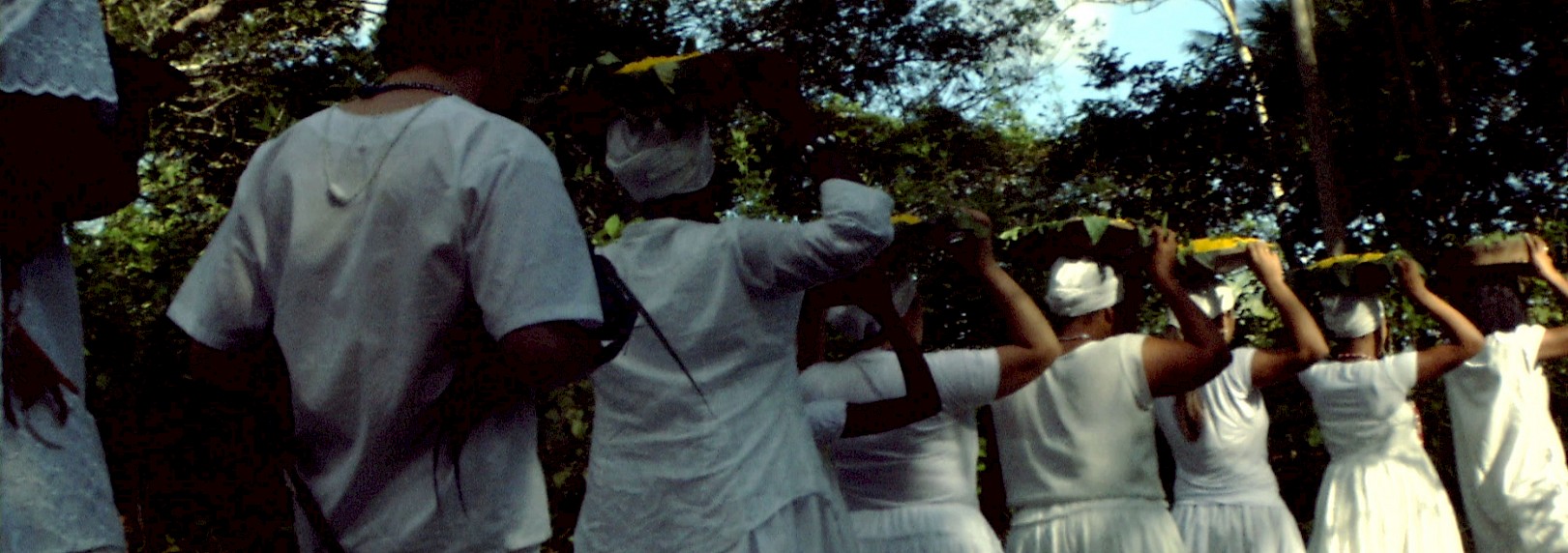Terreiro Ilê Axé Icimimó Aganju Didè
18:37
Offering to Obaluaê. Candomblé. Afro Brazil. Father Duda. Cachoeira. Bahia. July
Ilê Axé Icimimó Aganju Didé
A full moon beamed in the night sky over the city of Cachoeira, in Bahia, the Africa of Brazil: the place where slave ships would dock with kings and queens whose magic was yet to be revealed. It is also where the orixás of Candomblé disembarked, entering into the heads of the children of these saints of theirs. From the margins of the Paraguaçu River, where the silver light of late afternoons separates Cachoeira from neighboring São Félix, emerged boat after boat filled with stories.
"It was a ritual to invite the orixás to party.
Each dance, each movement, each word has a meaning”
Father Duda

The Duties to Obaluaê had started 30 days before July 31. The orixá who holds the Earth and the knowledge of cure had demanded his offering many years ago: young Omolulu, the healer-warrior needed to care for the health of his people in a land taken by the everyday suffering of slavery. Preparation-offering-procession-incorporation: rituals treated as the cowrie shells that fasten the beaded necklaces worn by the sons of saints (filhos de santo) in the only house that still carries out this celebration.
“A mighty house where only good deeds are done”: Terreiro Ilê Axé Icimimó Aganju Didé. Founded by Father João, son of Xangô and a native of Nigeria, Nagô. It was Xangô himself who appointed this house exclusively for positive deeds, where none of their children would charge money for the Axé.

“The coins in the mangers are for cleansing,
Obaluaê is removing what is negative.
If man hadn’t put money in the center of it all…
the world would be otherwise”
Father Duda
Xangô ordered the first Babalorixá at Icimimó to save the profits from his ceremony for another purpose: rescuing an enslaved 12-year-old girl who was about to arrive from Africa by way of the Paraguaçu river. On her black body laid the other Saint that would take over the house. From that day until July 30, 1979, when Duda was born, a few different mothers and fathers were in charge of this, which is one of 10 terreiros in Rio de Janeiro considered as national heritage.

When watching Duda play his atabaques, it is possible to feel the dignity and concentration in everything he touches. He handles the daily routine and the four annual ceremonies at Iciminó with devotion: he addresses that which needs to be shared and coordinates whatever needs to be kept silent, something ancient for a young body.
“Candomblé is secret”
Father Duda
There are things the orixás won’t grant permission to show so that people can’t make meaningless imitations, those for which the souls and hearts are not prepared. All you can see is the offering bowls for Obaluaê leaving in a white procession towards the forces of nature: the Candomblé is God, Earth, Man, animals, fruits, and leaves. And none of that is better or worse, it’s just dance and harmony.

The Axé takes place in the transition between visible and invisible, in the beat of the drums. Those overseeing the cooking of the offerings missed the drums rolling; those observing the darkness of the trance cannot tell others about the hems of the skirts brushing against the floor. Celebrating life means to position oneself humbly between the comings and goings of the Sacred earthly movement: to exercise another type of narrative in which the body surrenders and trusts another in order to write a story to connect with yesterday, cure today, and free tomorrow.

interview
Kiko Dinucci
15:23
